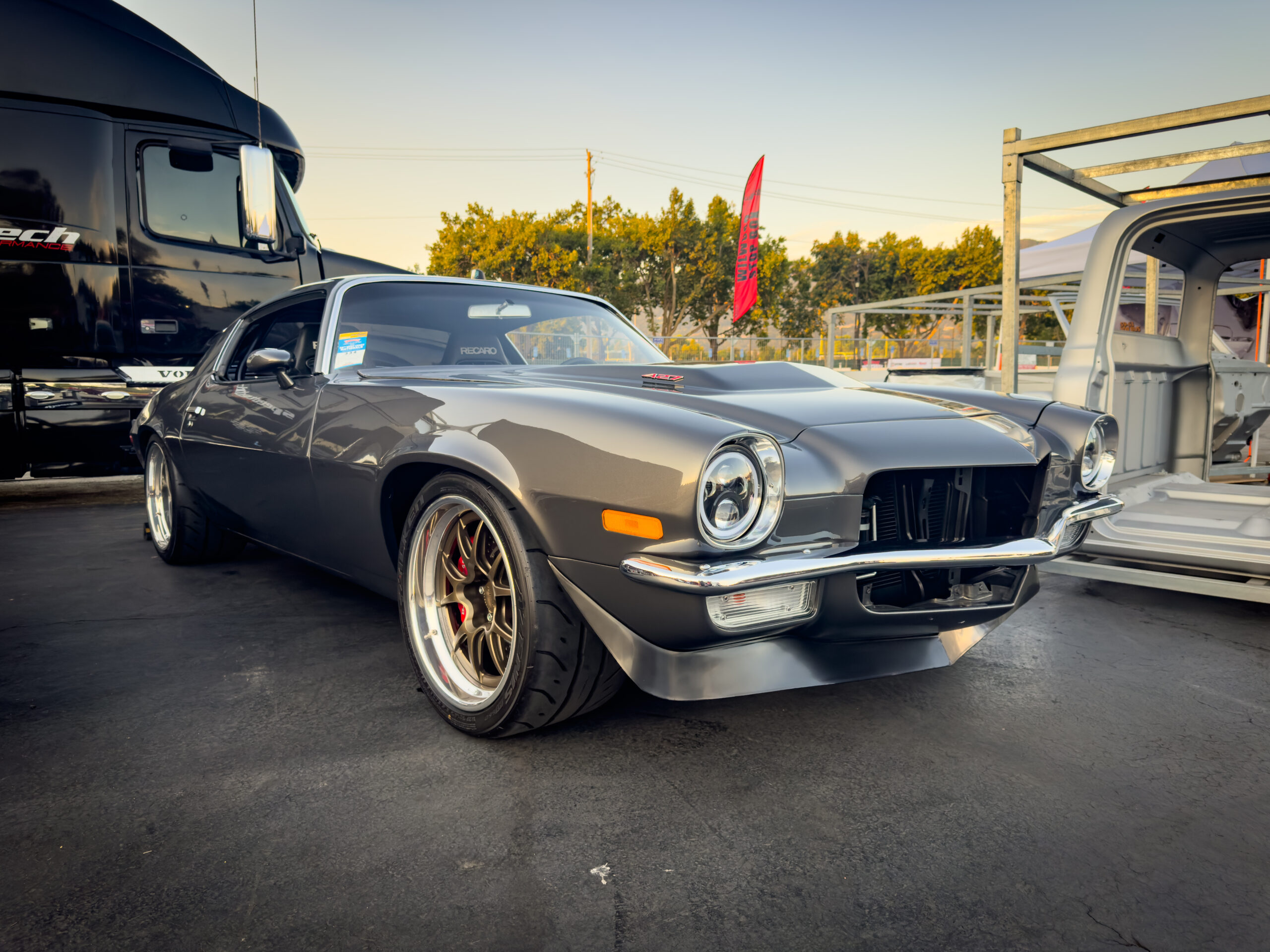Background

My family’s passion for the Camaro was clear, with multiple second, third, and fourth-gen models alongside Blazers, Berettas, Chevelles, and Silverados. We were, without a doubt, a Chevy family. My dad’s all-original 1970 Camaro Z28, part of our lives long before I was born, left a lasting impression. I remember how much he loved that car and how much I enjoyed riding in it. I eventually owned and drove a fourth-gen Z28 for years, which was fast and fun, but I always knew I’d come back to owning a second-gen.
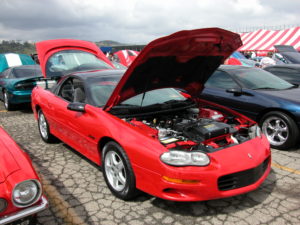
I started planning the build in 2006, but it was all mostly just on paper. Time and money weren’t easy to come by back then and the lack of mechanical skill didn’t help much either. I knew only enough to be dangerous, but lacked true experience in bodywork, paint, engine building, and suspension tuning. After moving to the Bay Area in 2014, any local support I had went away and I had to figure things out independently while also trying to connect with a new Camaro community for guidance and help. Luckily, that support slowly grew.
Goals
Nearly 20 years ago, when I first began planning this project, I put my goals into writing. Here is the original text I drafted in November 2006:
“We are building a 1967-68 or 1970-73 Camaro. It will be used as a daily driver and should have modern suspension, braking, safety, and interior amenities. Targeted power will be around 400 hp and should come from a modern naturally aspirated power plant. The option to take it to a track or autocross should be present, but not focused. If there was an identity for this particular Camaro, it would be “pro touring light” or “pro daily”.”
When the time came to begin the project and review my plans in 2016, I was surprised to find how little my goals had shifted over the previous decade. The main update was deciding to focus on a second-gen Camaro exempt from California’s smog regulations, narrowing the choice to a model from 1970 to 1974. Oh, and we’re well over the 400 hp target. Throughout this process, the vision for the build has remained guided by three clear and consistent goals that balance practicality, performance, and longevity. These priorities continue to shape every decision made.
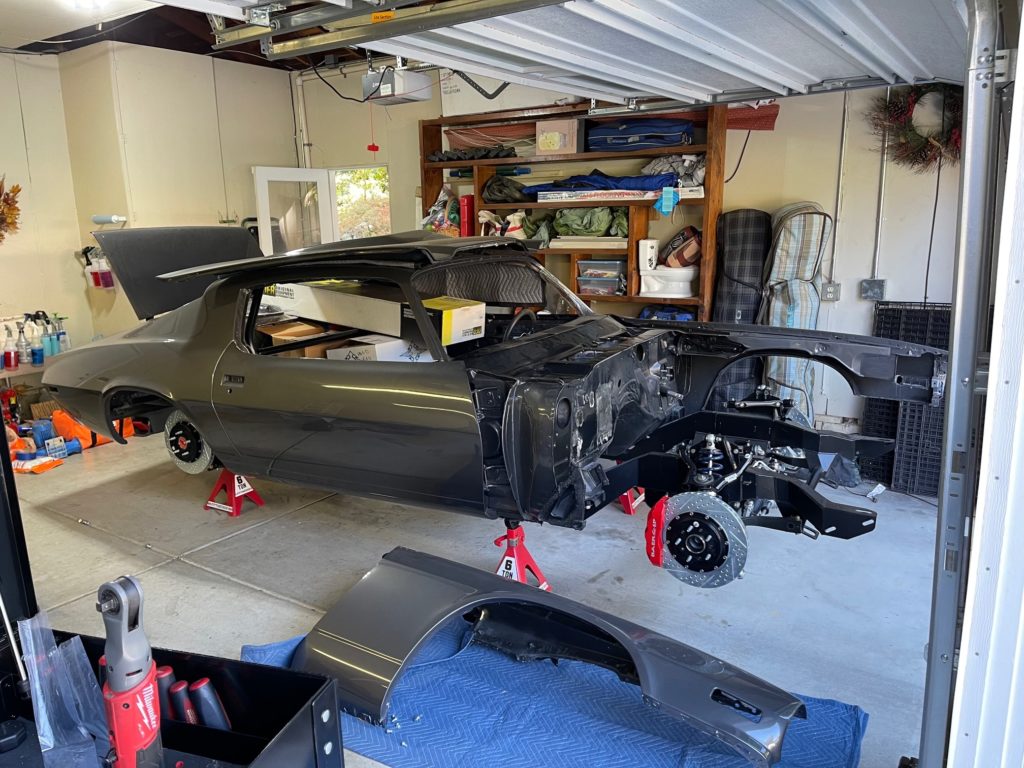
Daily Driver
I don’t believe in putting a car away just to “save” it, so this build will not be a garage queen. The goal is to create a car that can be driven daily, handling rain, everyday wear, and occasional bruises without worry. Since it will be used frequently, reliability and safety will be top priorities. Nearly all systems will be upgraded to modern standards, with the original body and select interior trim remaining. The interior will be designed for comfort, including features like air conditioning. This won’t be a dedicated race car; it will be a comparatively practical daily driver for an enthusiast. Additionally, the car will need to provide a satisfying driving experience every day, blending modern convenience with classic style. Attention to detail will ensure it remains enjoyable and dependable regardless of conditions or distance traveled.
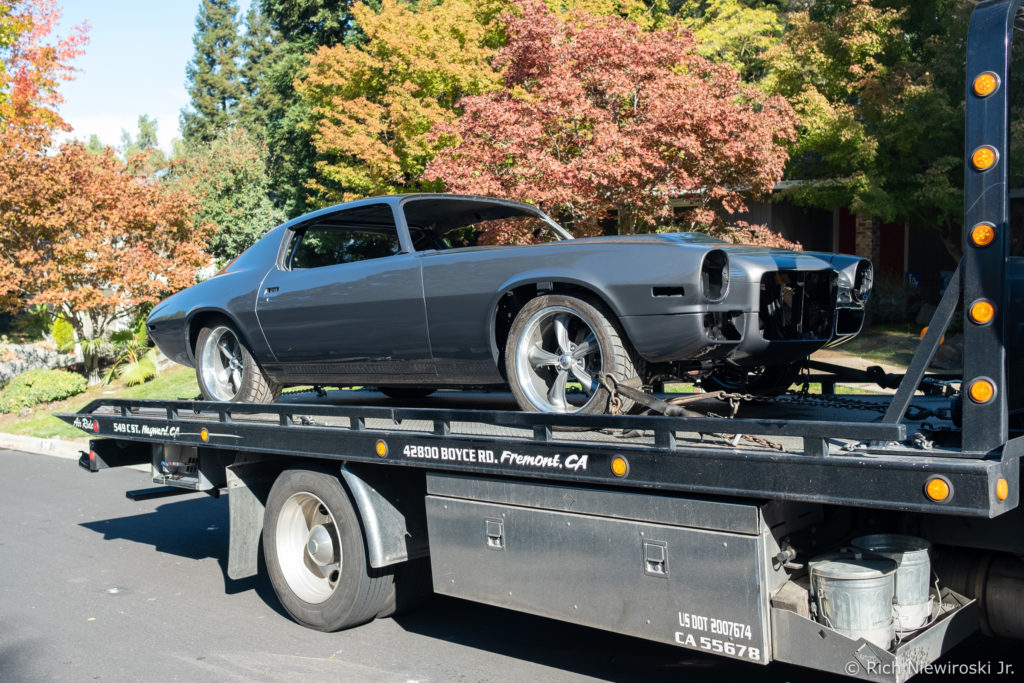
Track Capability
I enjoy track days as much as any enthusiast, and this build will be designed to participate in several each year. While it will serve as a daily driver, it must also perform well on the track. The modern powertrain and suspension will need to be versatile and adjustable enough to handle everyday driving as well as challenging circuits like Laguna Seca or Willow Springs Raceway. The idea of competing against modern sports cars in a 50-year-old Chevrolet excites me. I’m not aiming to win everything, but I want the car to be competitive, with my own skill being the main limitation. As long as it is capable and fun to drive, I will be satisfied. The balance between street and track performance is essential, ensuring the car remains enjoyable and manageable in both environments. This blend of versatility will be a key focus throughout the build.
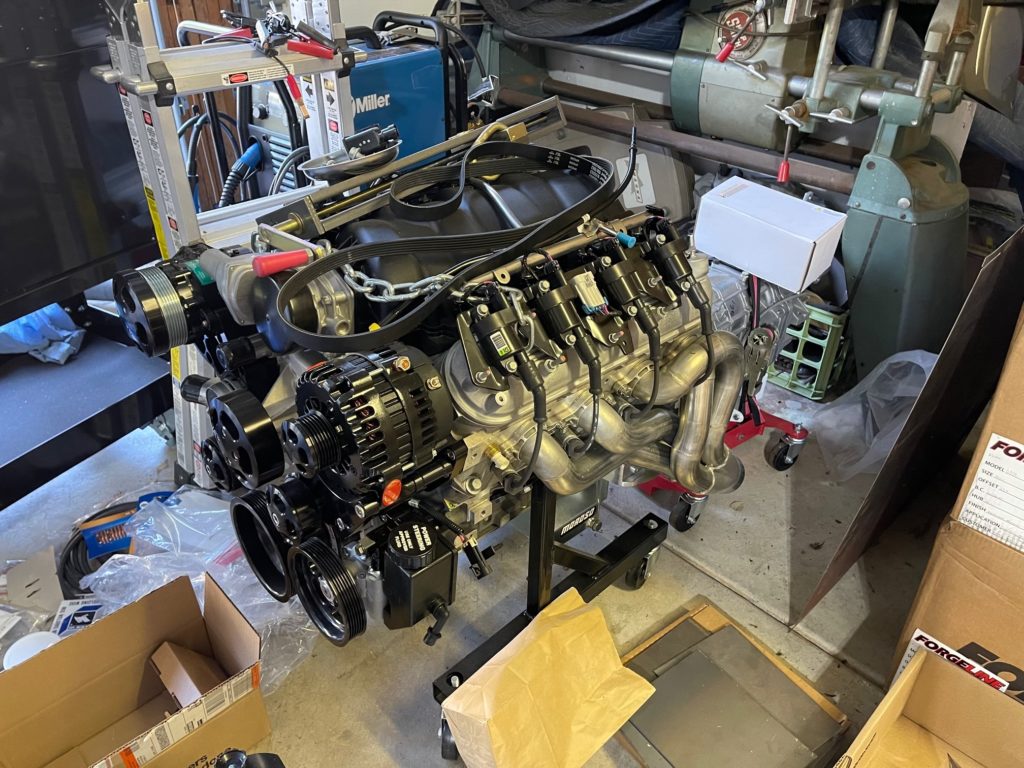
Reliability and Repairability
Reliability and repairability are central to this build. I’m a strong advocate for the consumer’s right to repair and reject throwaway technology. The second-generation Camaro is an ideal platform because parts are relatively plentiful and the aftermarket support is extensive. Many components require minimal fabrication and can be installed with less specialized knowledge. This car needs to be practical enough to be maintained, repaired, and rebuilt over time without relying heavily on proprietary or disposable parts. Function will always take priority over form. While the car should look great, every decision will favor durability, accessibility, and long-term usability to ensure it remains on the road and ready for anything.
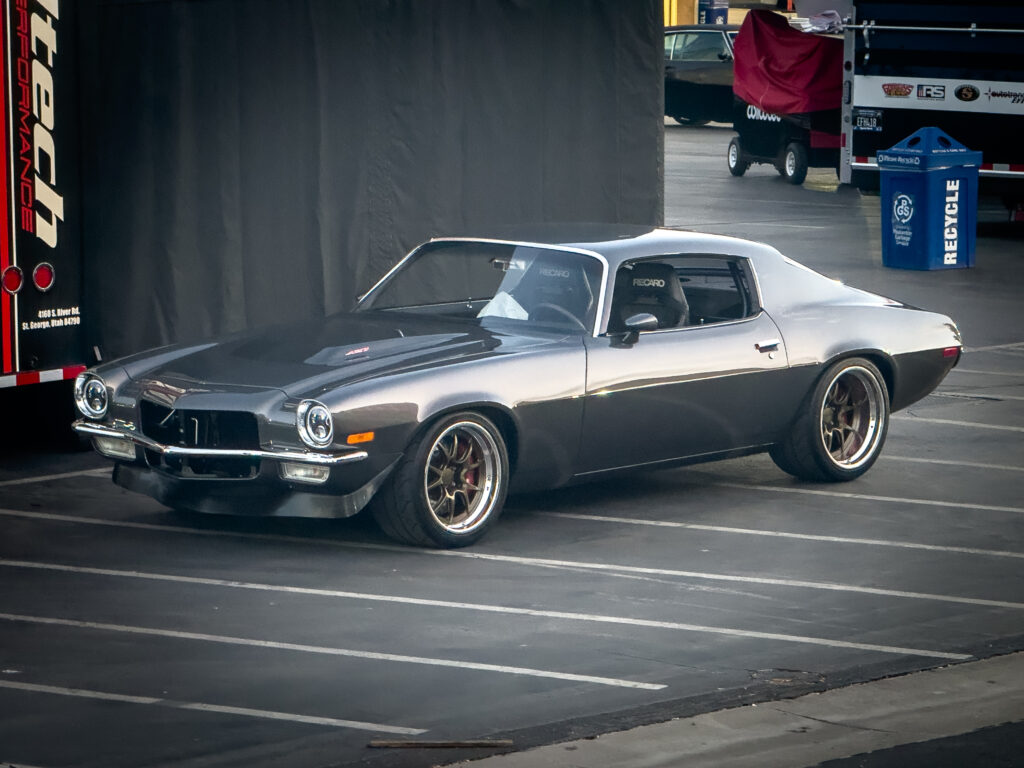
Parts List
Here’s a current and comprehensive parts list of everything in the car or about to be installed.
Body
- Body: 1973 Chevrolet Camaro base
- Body Work & Paint: Grand Collision Center
- Color: Porsche Agate Grey Metallic (LM7S, M7S, N0)
- Panels: Anvil Power Bulge Hood (Carbon Fiber/Fiberglass)
- Panels: Anvil Trunk Lid (Carbon Fiber/Fiberglass)
- Transmission Tunnel: Speedtech T56 Transmission Tunnel Cover – 21510
- Tubs: Detroit Speed Mini Tubs – 040403
- Hood Pins: Eddie Motorsports Hood Pin Kit Thru-Bolt Series Matte Black – MS110-45MB
Engine
- Engine: Chevrolet Performance LS427/570 – 19420191
- Oil Pan: Moroso 20142
- Oil Pickup Tube: Moroso 24050
- Windage Tray: Moroso 22941
- Pilot Bearing: ACDelco 14061685
- Accessory Drive: Wegner WAK033 (black, black a/c and alt, 225 amp alt)
- Alternator: Powermaster GM CS130D
- A/C Compressor: Sanden SD7 (Universal Air Conditioner CO 7176)
- Power Steering Pump: GM Type 2 Style
- Harmonic Damper: ATI Performance Super Harmonic Damper – ATI91777
- Belt Tensioner: Gates 38198
- Starter: ACDelco OEM Starter – 12691976
- Starter Bolt: GM Starter Bolt – 11610633 (2)
- Starter Pigtail: ACDelco OEM Multi-purpose Pigtail Kit – PT2974
- Radiator: Griffin Performance Fit – CU-00010-LS
- Radiator Retainer Pad: OER Radiator Retainer Pads – 371189 (2)
- Radiator Support Filler Panel: Classic Industries Radiator Support Filler Panel – T9436
- Accelerator Bracket: AVS Motorsports Drive by Wire Pedal Bracket Assembly DBW-1108
- Accelerator Bracket: Holley Drive by Wire Accelerator Pedal Bracket 145-131
Transmission
- Transmission: Chevrolet Performance T56 Super Magnum – 19352208
- Clutch/Flywheel: McLeod RXT Twin Clutch Kit – 6305507M
- Bellhousing: Quick Time LS to T-56 Low Profile – RM-8019
- Clutch Cylinder Actuator: Chevrolet Performance – 24264182
- Hardware: 2 clutch actuator to trans bolt – 11516424, 7 bell to trans bolt – 12523235, 6 flywheel bolt – 11569956
- Clutch Bleeder: Tick Performance Remote Clutch SPEEDbleeder – TPSBL
- Clutch Pedal: Classic Industries 1970-71 Camaro Brake and Clutch Pedal Assembly – KW327
- Clutch Linkage: McLeod Hydraulic Conversion Kit 1434005QD
- Shifter: Bowler Performance NightStick Short Throw Shifter for Tremec T56 Magnum – 6650600
- Shift Lever: Bowler Performance Shift Lever, 6″, 30° kickback, gray finish – 6063004
- Shift Knob: Bowler Performance 6-Speed Solid Shift Knob, gloss white with black letters, 3/8×16 adapter – 6160005
- Shift Bezel: TBD
Fuel Delivery
- Tank: Rick’s Tanks Restomod (ZL1 fuel pump, OEM fuel pressure regulator)
- Controller: VaporWorx PressureWorx ZL1/Universal PWM Fuel Module Controller
- Hoses: tbd
- Fittings: tbd
Electronics
- Engine Controller: Chevrolet Performance LS427/57 Engine Controller and Harness Kit – 19420000
Engine Controller: Holley EFI Terminator X Max Kit – 550-931Communication Cable: Holley CAN to USB Dongle – 558-443- Harness: American Wire Harness – 510034
- Battery: tbd
- Starter: ACDelco 12617229
- Starter Accessories: 2 starter bolts – 11610633, pigtail – 19368859, heat shield – 12629286, 3 heat shield bolts – 11571131
- Air Conditioning: Vintage Air Factory Air Gen IV SureFit Kit – 965070
- Wipers: RainGear Hidden Wiper System, 2-speed with delay – RG70/78-D
Suspension
- Subframe: Speedtech ExtReme Subframe – 21230 (satin black powdercoat – 220701)
- Rear Suspension: Speedtech ExtReme Torque Arm – 21300 (satin black powdercoat – 220721)
- Rear End: Dutchman Heavy Duty Ford 9″ Rear End, 56″ – 10404 (rear end housing powedercoat – 220550, center section powdercoat – 220562)
- Body Mount: Speedtech Body Mount Kit – 220508
- Brace: Speedtech ExtReme Subframe Downtube Braces – 21540
Brake
- Front Brakes: Baer 14″ Front Pro+ Brake System – 4301352
- Rear Brakes: Baer 14″ Rear Pro+ Brake System with Park Brake – 4262152
- Master Cylinder: Wilwood 15/16″ 216-13626-BK
- Brake Pedal: Classic Industries 1970-71 Camaro Brake and Clutch Pedal Assembly – KW327
- Lines: 3/8″ NiCopp
- Line Protector: The Stop Shop 3/8″ Brake Line Protector
- Clamps: 1/2″ clamps
Steering
- Column: Ididit Tilt Floor Shift with id.CLASSIC Ignition – 1620860051 (black powdercoat)
- Linkage: Speedtech Steering Shaft Kit – 220522
- Steering Wheel: MOMO Prototipo Heritage Steering Wheel – PRH35BK0S
- Steering Wheel: MOMO MOD. 07 Steering Wheel – R1905/35L
- Quick Release: NRG Innovations 2.0 Quick Release – SRK-200BK
- Hub: NRG Innovations Short Hub – SRK-170H
Wheels/Tires
- Front Wheel: Forgeline GA3R Open Lug, 18×11.5, 7.25″ backspacing, Medium Anodized Bronze centers, polished outers, conical seat with a 60-degree taper lug seats
- Rear Wheel: Forgeline GA3R Open Lug, 18×12, 5.5″ backspacing, Medium Anodized Bronze centers, polished outers, conical seat with a 60-degree taper lug seats
- Tires: Falken Azenis RT660 315/30ZR18 28673231
- Lug Nuts: Gorilla Automotive Forged Steel Racing Open End Lug Nuts, 12mm x 1.50, 3/4″ hex thread, chrome finish – 45038
Interior
- Upholstery: Custom interior by Avees Custom Upholstry
- Front Seats: Recaro Speed (crotch belt opening, Black Vinyl/Saturn Black, Silver Logo)
- Front Seat Brackets: Planted Driver – SB134DR / Passenger – SB134PA
- Front Seat Harnesses: Simpson Racing 3″ Camlock Harness – 29110BKHL1X
- Panels: OER
- Guages: Dakota Digital HDX – HDX-70C-CAM
- Stereo: Pioneer DMH-WT50000NEX
- Backup Camera: PixelMan PMD2A-S
- Speakers: TBD
Misc
- TBD
Journey So Far
Coming soon…
Current State
Coming soon…
The Future
Coming soon…
